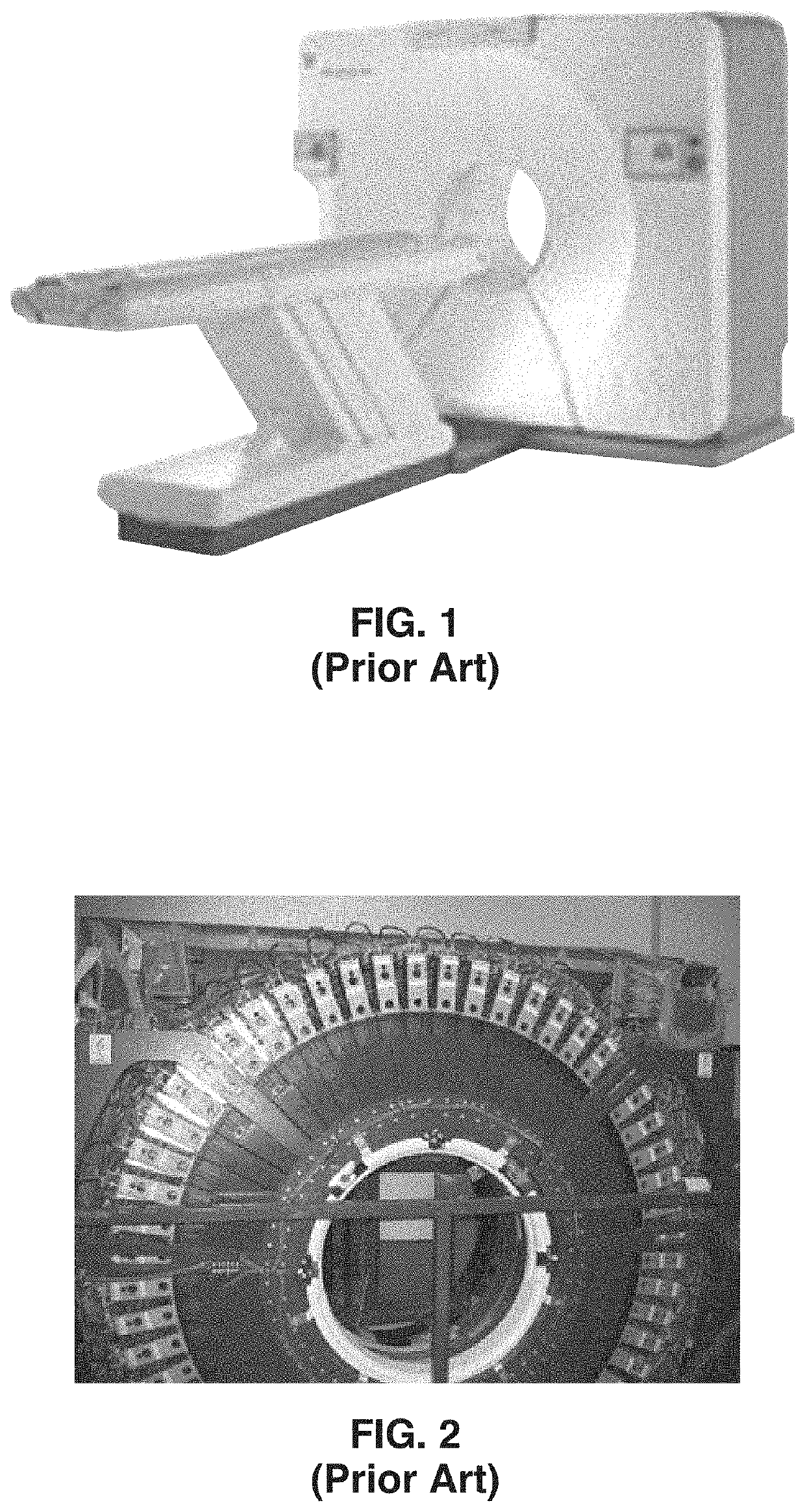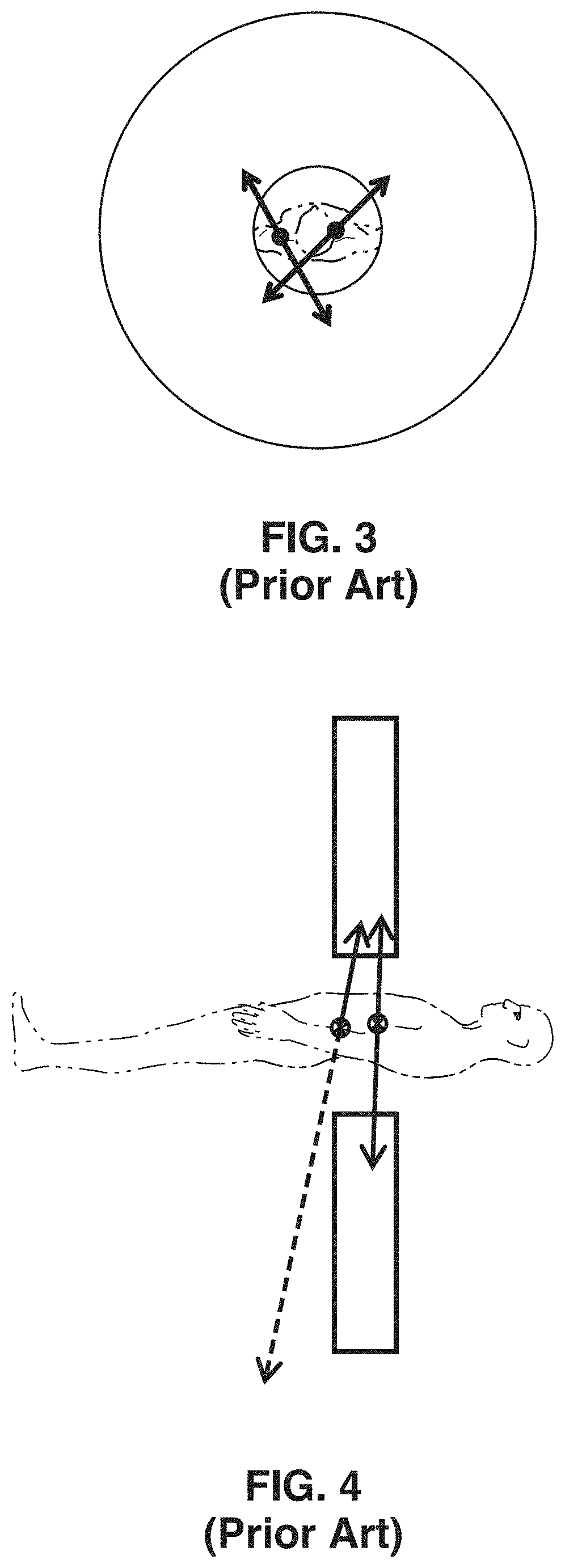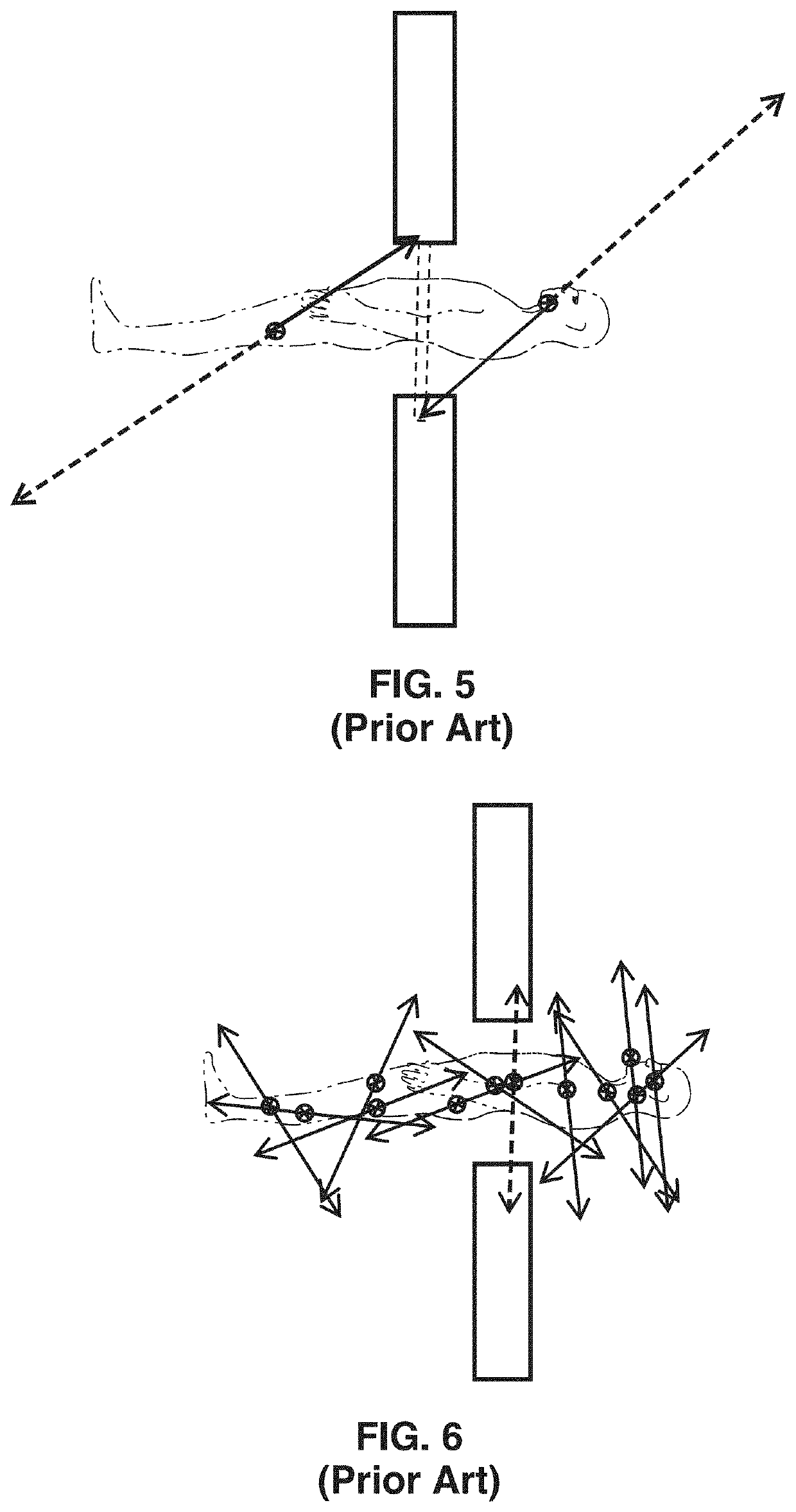Large-area detector apparatus for photosensor, radiation detector, and medical pet scanner applications
a radiation detector and large-area technology, applied in the field of photosensors, can solve the problems of requiring the patient to be exposed to high radioactive doses, and reducing the detection efficiency of gamma-ray pairs, so as to reduce the radiation dose, speed up the examination process, and increase the scanning sensitivity
- Summary
- Abstract
- Description
- Claims
- Application Information
AI Technical Summary
Benefits of technology
Problems solved by technology
Method used
Image
Examples
embodiment 10
[0047]FIG. 7 and FIG. 8 depict a comparison of parallax error in a large-diameter PET scanner like ABALONE PET, compared with the hypothetical use of a plurality of ring detection sections. In the ABALONE embodiment 10 of FIG. 7, the gamma-ray detector envelope 14 curves not only around the longitudinal axis of the patient as in a ring-detector, but also curves around the transverse axis of the patient's body 12. Thus, both gamma rays 16a, 16b in the gamma ray pair originating in the patient at locations 18a, 18b are detected in the system with only minor parallax error due to the three dimensional curving within the ABALONE PET scanner.
[0048]A conventional ring-PET was already described in FIG. 3 through FIG. 6, in which only a small portion of the gamma rays are detected. In FIG. 8 we see a hypothetical PET configuration 30 built up from a number of ring PETs 36a through 36n. A patient 32 is seen with an example gamma ray pair 34a, 34b which extends out striking the different stac...
embodiment 50
[0055]FIG. 9A through FIG. 9C depict an ABALONE photon detector, which is shown in an embodiment 50 for use with the ABALONE PET of the present disclosure. The cross section of FIG. 9A depicts the entire ABALONE photon detector 50, with a transparent upper housing 52 seen in FIG. 9B, and the electron detector 54 itself seen in FIG. 9C.
[0056]In FIG. 9A a photon detector embodiment 50 is exemplified with housing 52 seen with an outer sensor hemisphere 53 and photocathode 64, connected to a base plate 56, with ramped area 58 leading to an aperture 60 centered upon which is seen a seal 62, covered with the electron detector comprising a scintillator layer retained beneath the vacuum enclosure, and a photodetector 54 optically coupled to the underlying windowlet on the atmospheric side (e.g., a Geiger-Mode Avalanche Photodiode).
[0057]In FIG. 9B an embodiment of the photon detector housing 52 comprises a single molded dome piece of dielectric light-transmissive material (e.g., glass) havi...
PUM
 Login to View More
Login to View More Abstract
Description
Claims
Application Information
 Login to View More
Login to View More - R&D
- Intellectual Property
- Life Sciences
- Materials
- Tech Scout
- Unparalleled Data Quality
- Higher Quality Content
- 60% Fewer Hallucinations
Browse by: Latest US Patents, China's latest patents, Technical Efficacy Thesaurus, Application Domain, Technology Topic, Popular Technical Reports.
© 2025 PatSnap. All rights reserved.Legal|Privacy policy|Modern Slavery Act Transparency Statement|Sitemap|About US| Contact US: help@patsnap.com



